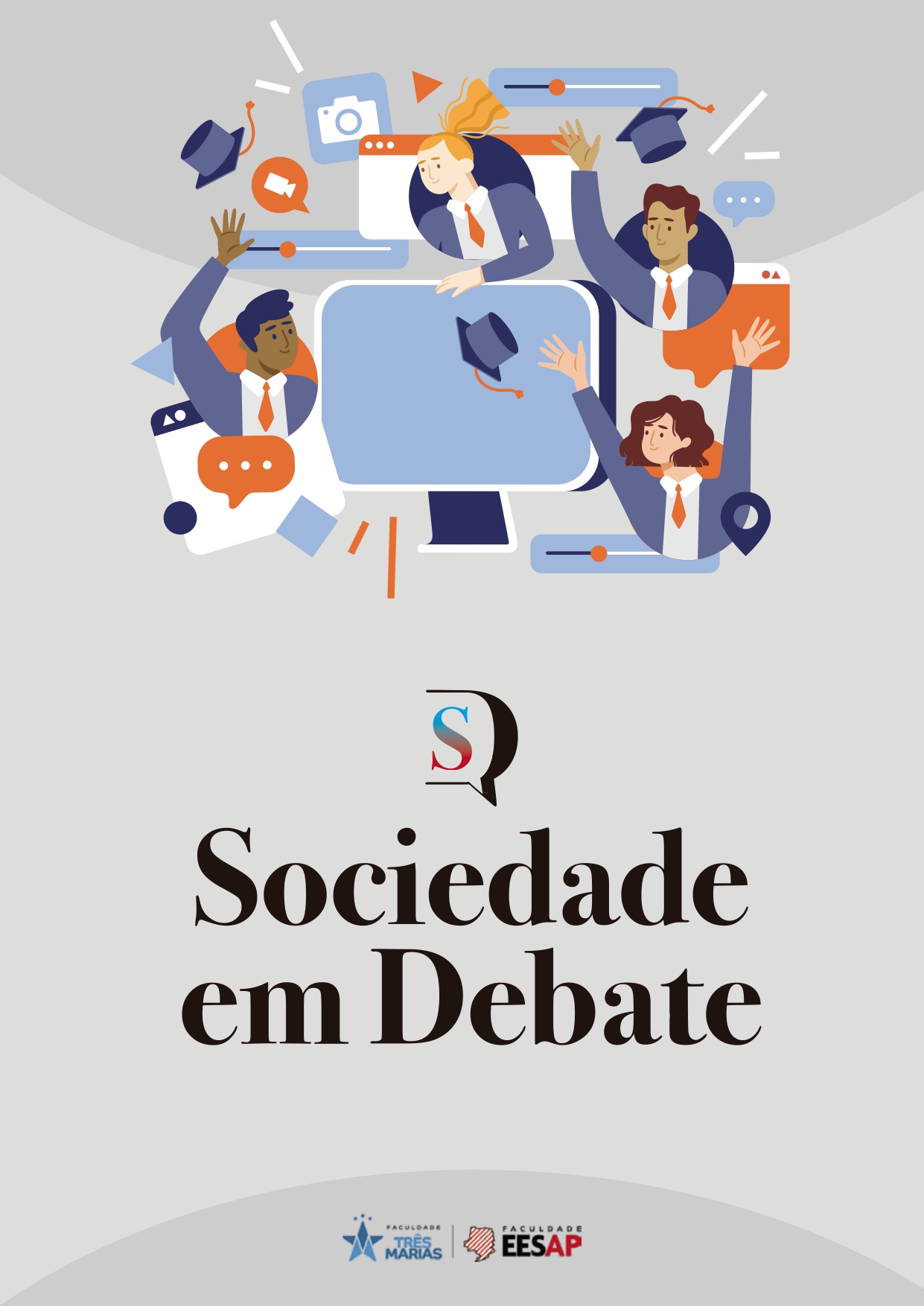Criatividade no âmbito das organizações: um problema de gestão
Palavras-chave:
^Criatividade, Gestão da Criatividade, InovaçãoResumo
A criatividade passou a ser reconhecida como fenômeno gerencial e vantagem competitiva para organizações. Possui relação direta com inovação. Nesse trabalho, defende-se a criatividade é uma fase antecedente a inovação e importante para seu desenvolvimento. Contudo, a premissa central é de que a criatividade é fenômeno gerenciável dentro do contexto organizacional. Diante disso, esse ensaio teórico tem como objetivo discutir aspectos gerais da criatividade como um fenômeno gerenciável. O método utilizado é um ensaio teórico que visa a discussão de pontos que são encontrados em termos de desenvolvimento. É utilizado o modelo de gestão da criatividade organizacional de Muzzio (2019) para tomar como base. Cada ponto discutido no desenvolvimento desse ensaio apresenta discussões que culminam em resultados e conclusões analíticas para o tema em debate. Desta forma, os principais pontos do desenvolvimento são: bases e antecedentes da criatividade, gestão da criatividade e inovação. Por fim, abordagem mis recente no estudo da criatividade, a criatividade aberta e a colaboração.
Referências
Amabile, T. M. (1997). Motivating Creativity in Organizations: On Doing What You Love and Loving What You Do. California Management Review, 40(1), 39–58. https://doi.org/10.2307/41165921
Amabile, T. M., & Pratt, M. G. (2016). The dynamic componential model of creativity and innovation in organizations: Making progress, making meaning. Research in Organizational Behavior, 36, 157–183. https://doi.org/10.1016/j.riob.2016.10.001
Anderson, N., Potočnik, K., & Zhou, J. (2014). Innovation and Creativity in Organizations: A State-of-the-Science Review, Prospective Commentary, and Guiding Framework. Journal of Management, 40(5), 1297–1333. https://doi.org/10.1177/0149206314527128
Bérubé, J., & Demers, C. (2019). Creative organizations: When management fosters creative work. Creative Industries Journal, 12(3), 314–340. https://doi.org/10.1080/17510694.2019.1621619
Caccamo, M. (2020). Leveraging innovation spaces to foster collaborative innovation. Creativity and Innovation Management, 29(1), 178–191. https://doi.org/10.1111/caim.12357
Caniëls, M. C. J., De Stobbeleir, K., & De Clippeleer, I. (2014). The Antecedents of Creativity Revisited: A Process Perspective: The Antecedents of Creativity Revisited. Creativity and Innovation Management, 23(2), 96–110. https://doi.org/10.1111/caim.12051
Castilho, M., & Quandt, C. (2017). Collaborative Capability in Coworking Spaces: Convenience Sharing or Community Building? Technology Innovation Management Review, 7(12), 32–42. https://doi.org/10.22215/timreview/1126
Caves, R. E. (2003). Contracts Between Art and Commerce. Journal of Economic Perspectives, 17(2), 73–83. https://doi.org/10.1257/089533003765888430
Chesbrough, H. W. (2003). Open innovation: The new imperative for creating and profiting from technology. Harvard Business School Press.
Drazin, R., Glynn, M. A., & Kazaniian, R. K. (1999). Multilevel theorizing about creativity in organizations: a sensemaking perspective. Academy of Management Review, 23.
Ekvall, G. (1996). Organizational climate for creativity and innovation. European Journal of Work and Organizational Psychology, 5(1), 105–123. https://doi.org/10.1080/13594329608414845
Erez, M., & Nouri, R. (2010). Creativity: The Influence of Cultural, Social, and Work Contexts. Management and Organization Review, 6(3), 351–370. https://doi.org/10.1111/j.1740-8784.2010.00191.x
Godart, F., Seong, S., & Phillips, D. J. (2020). The Sociology of Creativity: Elements, Structures, and Audiences. Annual Review of Sociology, 46(1), 489–510. https://doi.org/10.1146/annurev-soc-121919-054833
Granovetter, M. (1973). The Strength of Weak Ties. American Journal of Sociology, 21.
Granovetter, M. (1983). The Strength of Weak Ties: A Network Theory Revisited. Sociological Theory, 1, 201. https://doi.org/10.2307/202051
Granovetter, M. (1985). Economic Action and Social Structure: The Problem of Embeddedness. American Journal of Sociology, 91(3), 481–510. http://www.jstor.org/stable/2780199
Inkpen, A. C., & Tsang, E. W. K. (2005). Capital, Networks, and Knowledge Transfer. SociThe Academy of Management Reviewal, 30(1), 146–165. http://www.jstor.org/stable/20159100 .
Isaksen, S. G. (2018). Leadership s role in Creative climate creation. Em Handbook on leadership and creativity. Mumford, M. D.; Hemlin, S.
Mejia, C., D’Ippolito, B., & Kajikawa, Y. (2021). Major and recent trends in creativity research: An overview of the field with the aid of computational methods. Creativity and Innovation Management, 30(3), 475–497. https://doi.org/10.1111/caim.12453
Mietzner, D., & Kamprath, M. (2013). A Competence Portfolio for Professionals in the Creative Industries. Creativity and Innovation Management, 22(3), 280–294. https://doi.org/10.1111/caim.12026
Moultrie, J., & Young, A. (2009). Exploratory Study of Organizational Creativity in Creative Organizations. Creativity and Innovation Management, 18(4), 299–314. https://doi.org/10.1111/j.1467-8691.2009.00536.x
Mumford, M., & Hemlin, S. (2017). Handbook of Research on Leadership and Creativity. Edward Elgar Publishing. https://doi.org/10.4337/9781784715465
Muzzio, H. (2017). Indivíduo, Liderança e Cultura: Evidências de uma Gestão da Criatividade. Revista de Administração Contemporânea, 21(1), 107–124. https://doi.org/10.1590/1982-7849rac2017160039
Muzzio, H. (2019). Criatividade aberta: Proposição teórica de análise a partir dos espaços de coworking. Interações (Campo Grande), 1005–1018. https://doi.org/10.20435/inter.v20i4.1982
Muzzio, H., & Gama, M. (2021). Collaborative idea generation: An experience of open creativity in the public sector. VINE Journal of Information and Knowledge Management Systems. https://doi.org/10.1108/VJIKMS-07-2021-0112
Muzzio, H., & Paiva Júnior, F. G. (2018). Organizational Creativity Management: Discussion Elements. Revista de Administração Contemporânea, 22(6), 922–939. https://doi.org/10.1590/1982-7849rac2018170409
Nahapiet, J., & Ghoshal, S. (1998). Social Capital, Intellectual Capital, and the Organizational Advantage. The Academy of Management Review, 23(2), 242. https://doi.org/10.2307/259373
Perry-Smith, J. E., & Mannucci, P. V. (2017). From Creativity to Innovation: The Social Network Drivers of the Four Phases of the Idea Journey. Academy of Management Review, 42(1), 53–79. https://doi.org/10.5465/amr.2014.0462
Perry-Smith, J. E., & Shalley, C. E. (2003). The Social Side of Creativity: A Static and Dynamic Social Network Perspective. The Academy of Management Review, 28(1), 89. https://doi.org/10.2307/30040691
Reckwitz, A. (2020). The invention of creativity: Modern society and the culture of the new. John Wiley & Sons.
Rickards, T., & Moger, S. (2000). Creative Leadership Processes in Project Team Development: An Alternative to Tuckman’s Stage Model. British Journal of Management, 11(4), 273–283. https://doi.org/10.1111/1467-8551.00173
Tidd, J., Besantt, J., & Pavitt, K. (2008). Gestão da Inovação—3a Ed. (3o ed). Bookman.
Van de Ven, A. H. V. de. (1986). Central Problems in the Management of Innovation. Management Science, 32(5,), 590–607. http://www.jstor.org/stable/2631848
Xu, F., & Rickards, T. (2007). Creative Management: A Predicted Development from Research into Creativity and Management. Creativity and Innovation Management, 16(3), 216–228. https://doi.org/10.1111/j.1467-8691.2007.00445.x
Meneghetti, F. K. (2011). O que é um ensaio-teórico? Revista de Administração Contemporânea, 15(2), 320–332. https://doi.org/10.1590/S1415-65552011000200010



